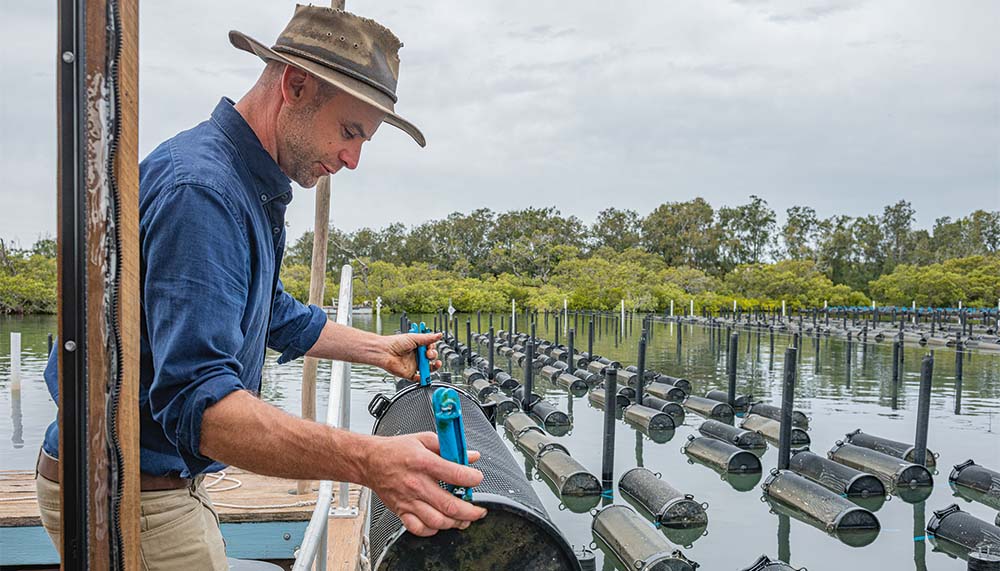Overcoming multiple challenges in recent years, Australia’s $100-million-a-year oyster industry has undergone a positive revolution.
Story + Photo Ken Eastwood
Australia’s oyster industry has copped a shellacking in recent years. Diseases have torn through growing areas, floods have ripped out millions of dollars’ worth of infrastructure and COVID has devastated the hospitality industry that accounted for 70% of sales. But, despite this, oyster growers say the industry is now in a great place, having undergone major positive changes.
“If you go back 15 years, the industry was completely different,” says Andy Myers, executive officer of industry body Oysters Australia. “We’ve really evolved. It puts us in a really strong position going forward, and the demand for oysters is so strong.” He says there have been major advances in the way oysters are harvested, technology upgrades, corporations pouring millions of dollars into oyster growing and interesting developments, with a fledgling industry growing in WA.
Recently, Australia has produced about 11.5 million dozen oysters annually, almost all of which are consumed domestically. That’s down on a high of almost 14 million in 2016–17. About half of Australia’s oysters are grown in NSW (mainly the Sydney rock oyster), and Tasmania and SA produce about 25% each (both of which mainly grow the Japanese species known as the Pacific oyster).
Andy says the evolution has included better growing methods and professionalism, such as the use of farm management apps. “Farm management used to be done on a whiteboard or in a farm manager’s head,” he says. The old-fashioned rack and rail systems, with hard-to-maintain fixed timber infrastructure and oysters grown on large trays at fixed heights in the water, are being replaced by minimalistic long lines, with bags of oysters attached, and the adoption of a New Zealand automated flip system that can turn over 500m lines of oyster baskets in a few minutes – a job that used to take several men hours. “Systems like that are probably reducing the environmental impacts as well,” Andy says. “The 6–9-foot (2–3m) trays shade the seagrass underneath, but with longline systems, the wind moves them left and right and you get scattered sunlight going through the bags.”
This story excerpt is from Issue #142
Outback Magazine: April/May 2022










